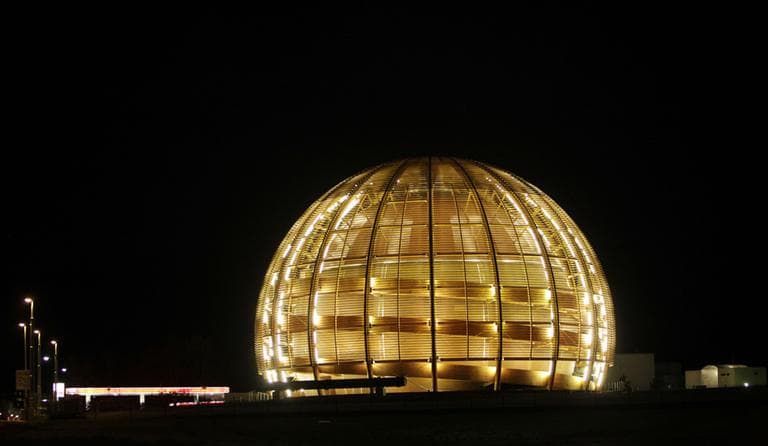Advertisement
Tracking Neutrinos
ResumeRoll over Einstein. Scientists clock neutrinos moving faster than the speed of light. If it’s true, it changes everything. We’ll track neutrinos.

E=mc2 is the one piece of physics everybody knows. Einstein’s special relativity theory. 1905. Says nothing can travel faster than the speed of light. It’s the basis, the bedrock, of modern physics. And last week, out of the big CERN facility in Europe, the stunning news that some speedy little neutrinos have been clocked traveling faster. Faster than the speed of light.
To physicists, that’s more than an earthquake. Most are skeptical so far. Waiting for confirmation. But if it were true? Time travel fans, start your engines.
This hour On Point: speedy neutrinos rock Einstein’s world.
-Tom Ashbrook
Guests
Michio Kaku, theoretical physicist, tenured professor, and co-creator of string field theory, a branch of string theory.
Stan Wojcicki, a member of the MINOS collaboration [Main Injector Neutrino Oscillation Search] at Fermilab and a Professor Emeritus at Stanford University.
James Gillies, a particle physicist and spokesman for CERN (European Organization for Nuclear Research), which runs a series of particle accelerators, including, most famously nowadays, the Large Hadron Collider.
From Tom's Reading List
The news of the neutrino experiment prompted an explosion of neutrino jokes on the web, here are a few.
Here's a description of the OPERA team's experiment that produced the startling results.
Wired "In the experiment, neutrinos are generated at the Super Proton Synchrotron (SPS) particle accelerator at the CERN LHC complex in Geneva and further accelerated down a 1 km beam line toward the Gran Sasso National Laboratory in Italy. At Gran Sasso, a detector instrument called OPERA measures the neutrinos. The distance from CERN to Gran Sasso is 732 km straight through the Earth, traveling up to 11.4 km below the Earth’s surface. Remember, neutrinos don’t interact with matter so the Earth is invisible to the tiny particles."
Wall Street Journal "That was the reaction of physicists around the world last week when they heard that experiments in Switzerland indicate that Einstein's theory of relativity might be wrong. Since 1905, when Einstein declared that nothing in the universe could travel faster than light, the theory has been the bedrock of modern physics. Indeed, most of our high-tech wizardry depends on it."
New Scientist "Most commonly, experiments use large pools of water or oil. When neutrinos interact with electrons or nuclei of those water or oil molecules, they give off a flash of light that sensors can detect."
This program aired on September 29, 2011.
